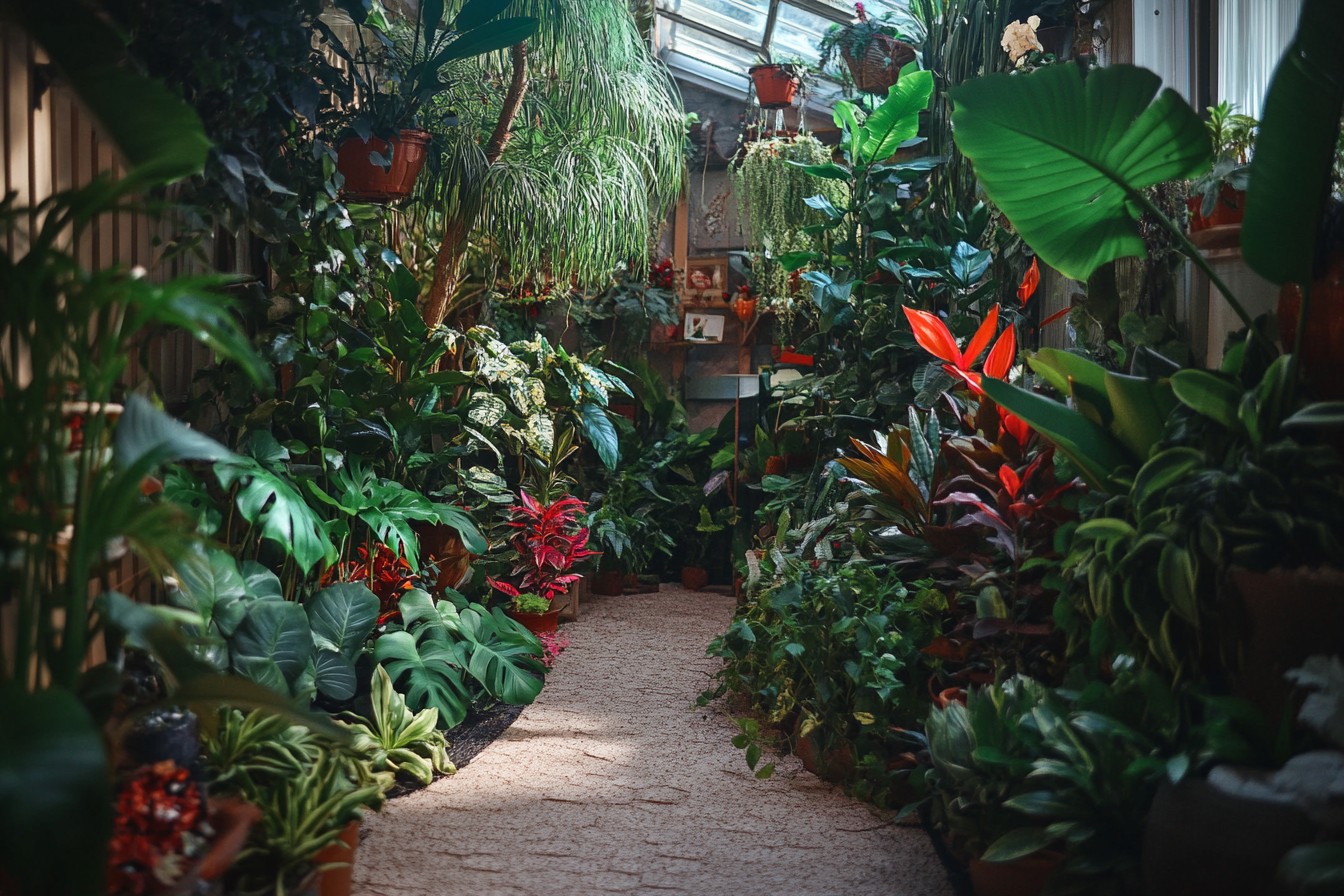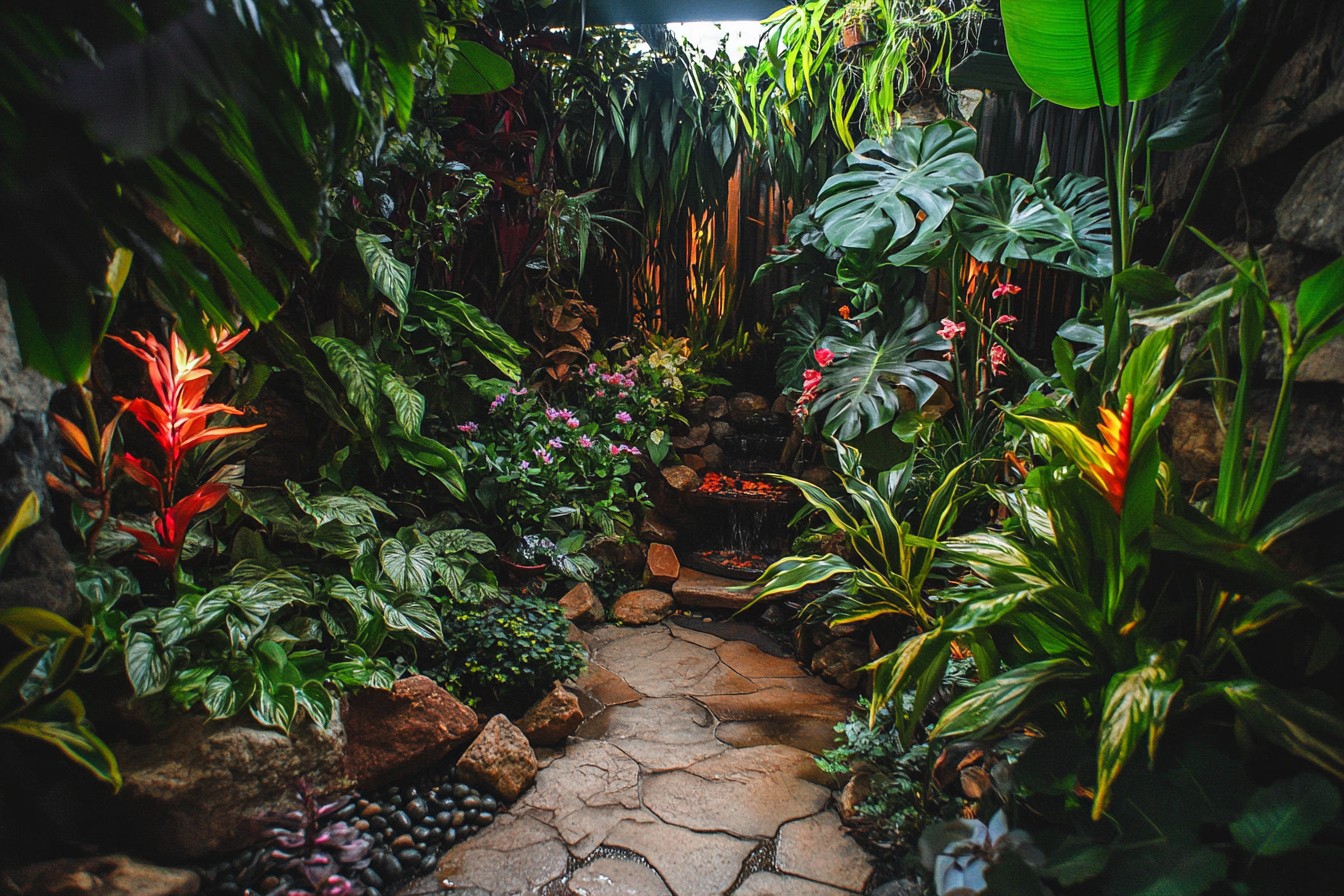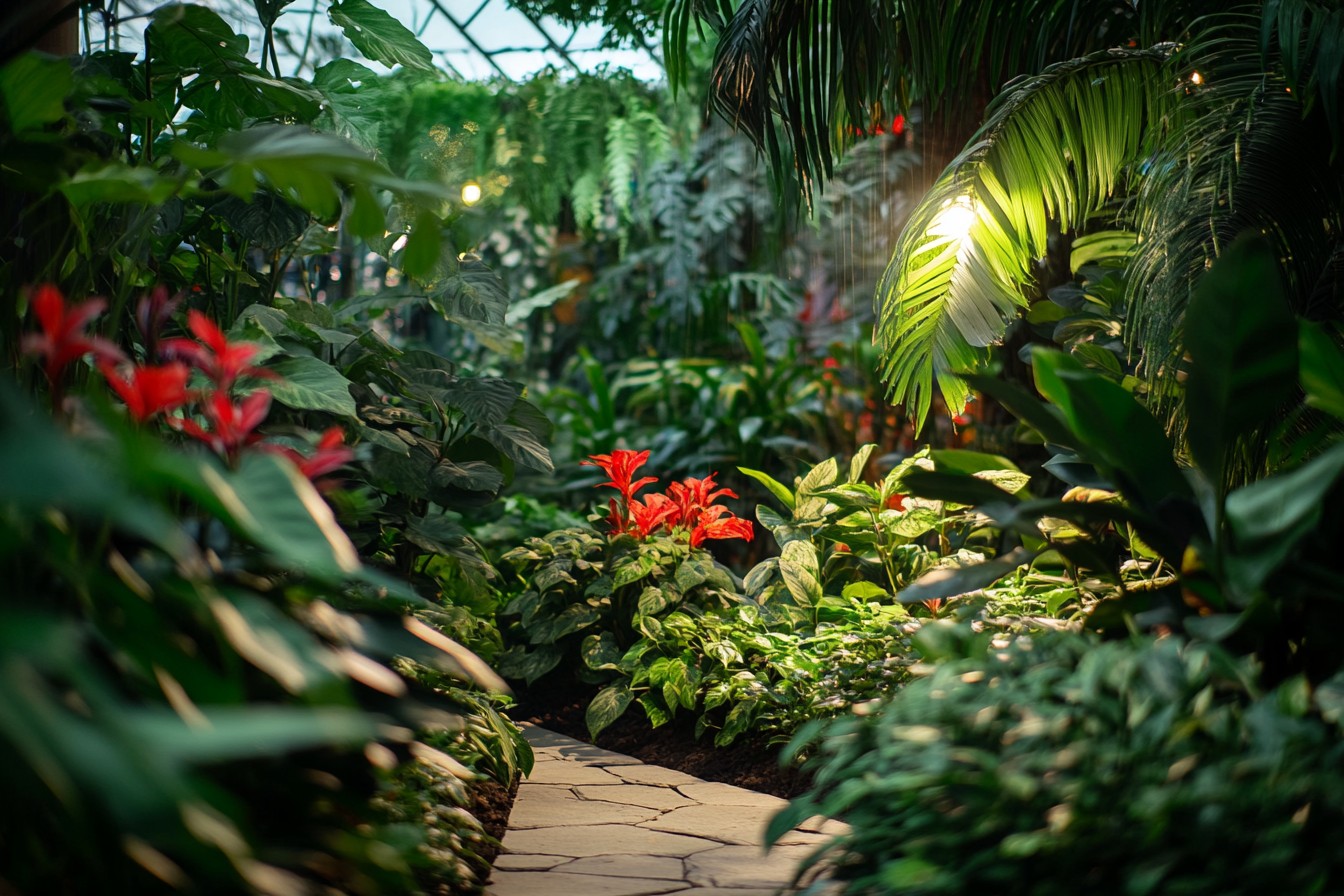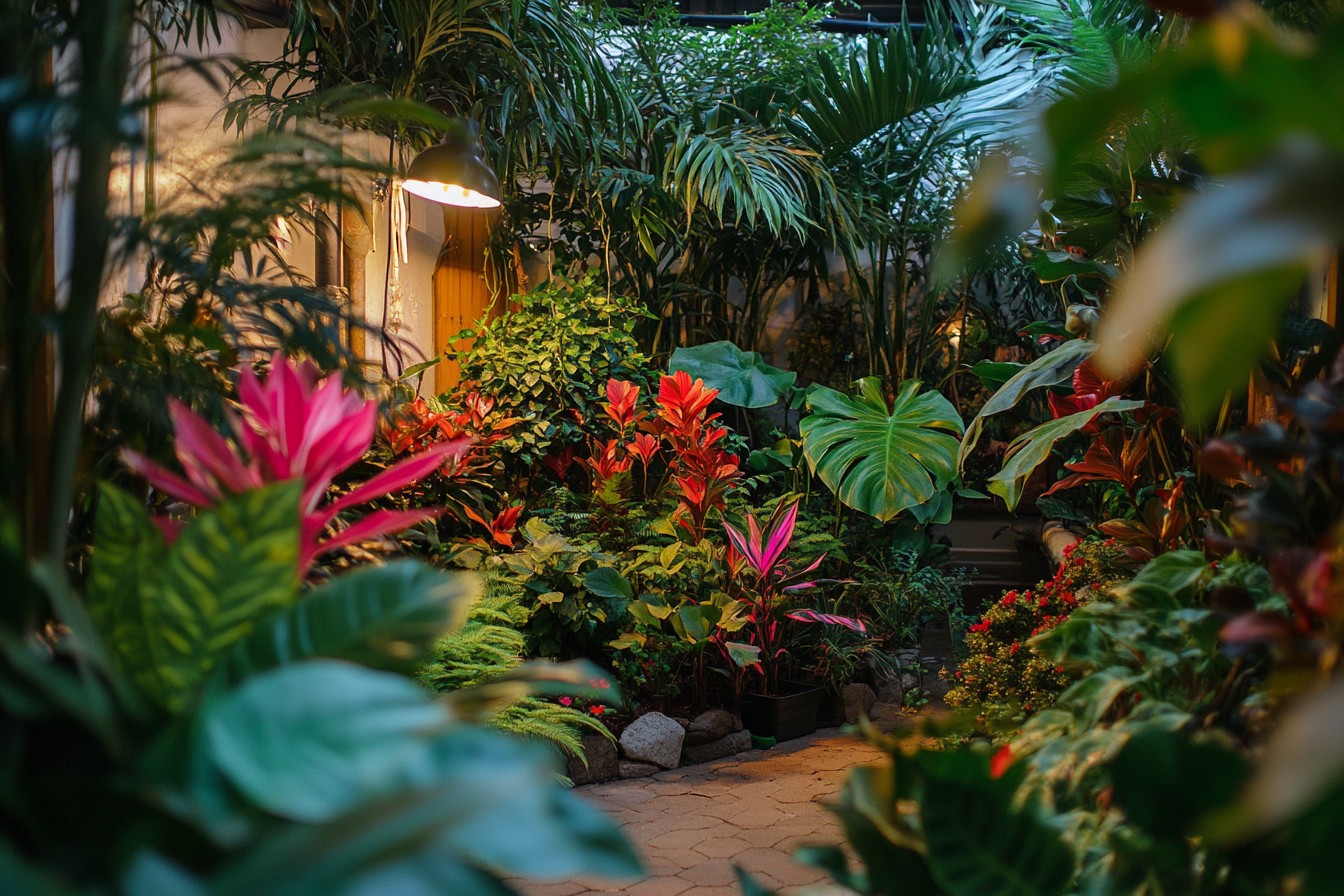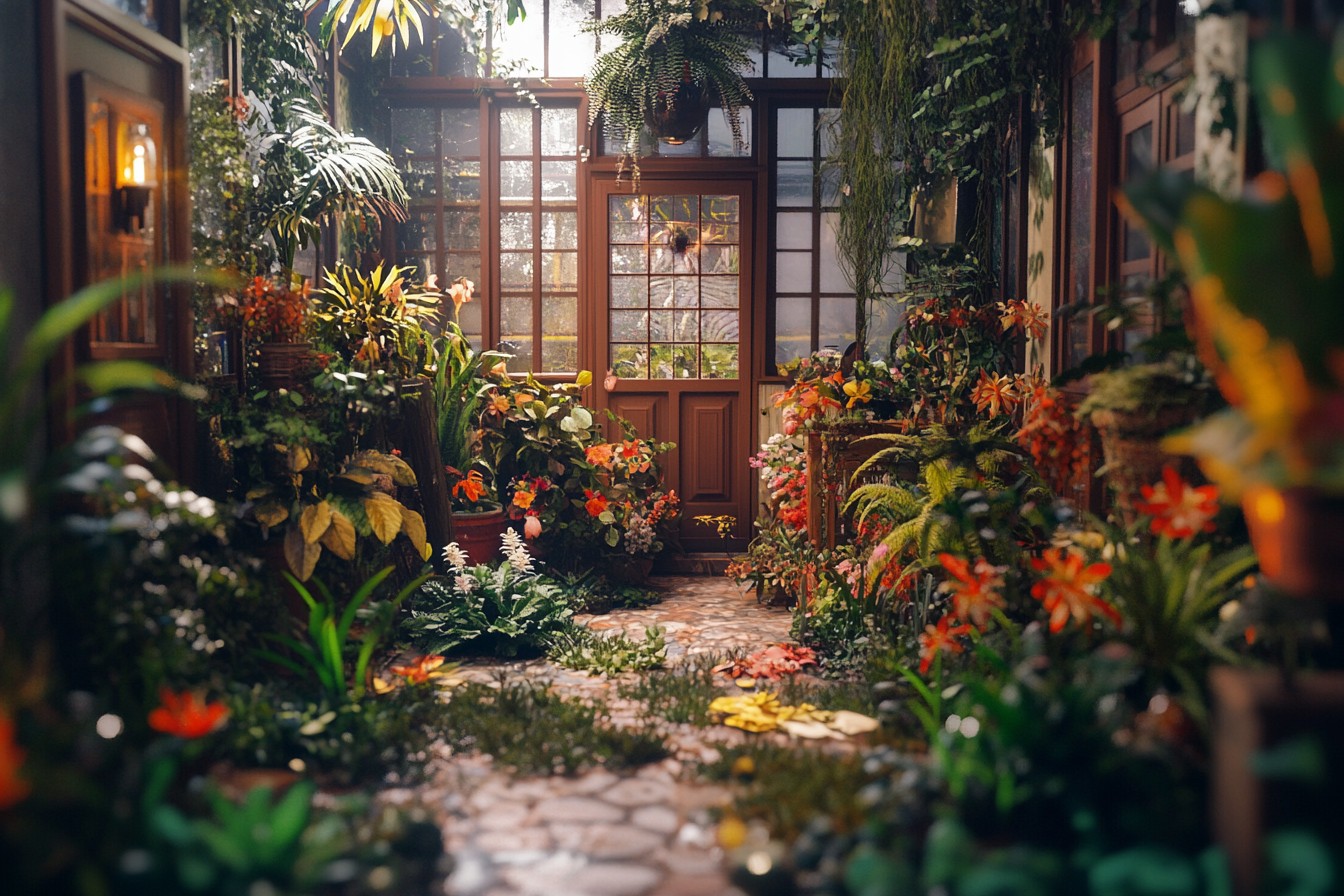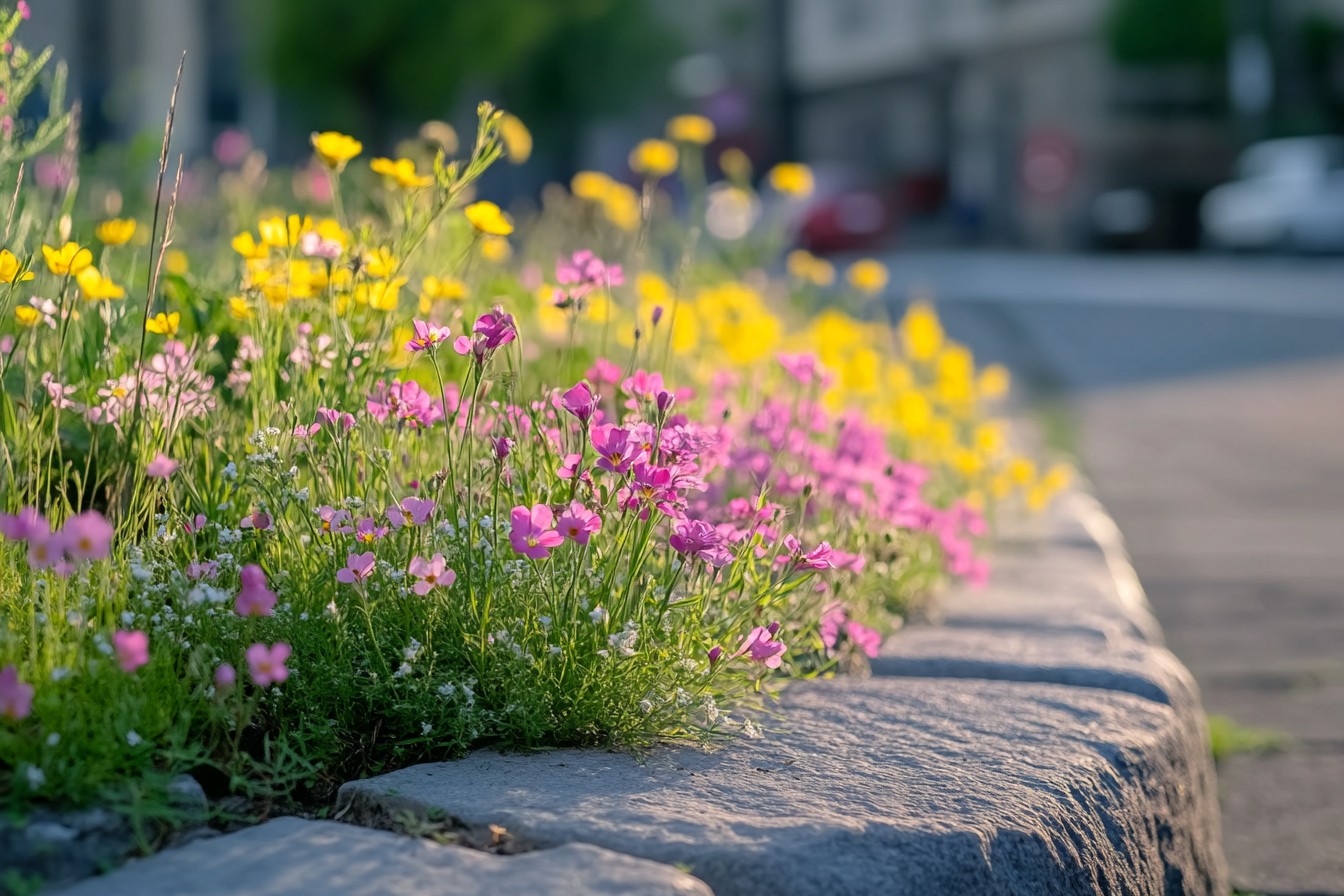The exact moment I decided to grow tropical plants in my Illinois apartment came during the bleakest February day imaginable. I was staring out at a landscape so colorless it might as well have been a black and white photo—three-foot snow drifts, bare trees, and a sky the exact shade of despair. The thermometer on my window read -11°F, and the humidity in my apartment hovered around 19%, causing my skin to feel like it was auditioning for a role as ancient parchment.
Something in me just snapped. “I refuse to live like this,” I announced to my snake plant, the only houseplant that had survived my neglect to that point. “We’re going tropical.” The snake plant, unsurprisingly, had no opinion on the matter.
Looking back, that was probably the last simple, low-maintenance day of its life. What followed was a two-year journey of transforming my average Midwestern apartment into what my mom now calls “that jungle you live in” and what my electric company likely refers to as “that guy who keeps our shareholders happy.” Creating and maintaining a tropical paradise in a place that regularly sees temperatures cold enough to freeze exposed skin in minutes has been an adventure in creative problem-solving, spectacular failures, and unexpected successes. Let’s start with the fundamentals: tropical plants generally want three things that an Illinois winter aggressively does not provide—warmth, humidity, and light.
My apartment’s baseline condition in winter was bone-dry air, temperature fluctuations that would make a rollercoaster seem stable, and light levels that would make a mushroom say, “bit dim in here, isn’t it?” Not exactly ideal for plants that evolved in equatorial rainforests. Humidity was my first and most persistent battle. Most tropical plants want 60-80% humidity, while my winter apartment naturally sat around 20% (roughly equivalent to the Sahara Desert, for reference).
My initial solution was simple: small humidifiers in plant-heavy areas. I bought three ultrasonic cool mist humidifiers for about $29.99 each and positioned them strategically around my apartment. Two weeks and several refills later, I had my first lesson in tropical gardening economics: running multiple humidifiers constantly costs a small fortune in both electricity and distilled water.
My second lesson came shortly thereafter: regular tap water in ultrasonic humidifiers creates a fine white mineral dust that coats everything in your apartment, including your plants, furniture, electronics, and lungs. Not ideal. I switched to distilled water, which solved the dust problem but created a new one—I was now buying and hauling home approximately 15 gallons of distilled water weekly, like some sort of bizarre water hoarder.
At $1.29 per gallon, this added about $75 monthly to my plant budget, which was frankly unsustainable for plants that weren’t paying rent. The humidifier situation reached its logical conclusion when I flooded my bathroom for the third time by overfilling a unit at 6 AM before coffee. Standing ankle-deep in water, staring at my reflection in the mirror, I realized I needed a more systematic approach.
Research led me to whole-room humidifiers with built-in humidistats and much larger water reservoirs. I invested in a Levoit 6L model for $89.99 that could maintain my living room at a consistent humidity level without daily refills. For my bedroom plant area, I found a used console humidifier at a thrift store for $34 that, after a thorough cleaning and filter replacement, could output an impressive amount of moisture.
But even with these improvements, maintaining adequate humidity remained a constant challenge. The solution came from an unexpected direction—plant grouping and microclimate creation. I discovered that clustering plants together creates a zone of higher humidity as they collectively transpire.
I reorganized my plant collection into dense groupings rather than spreading them decoratively throughout the apartment. These plant clusters, combined with targeted humidification, created microclimates that maintained 50-65% humidity in specific areas rather than trying to humidify the entire apartment. For particularly humidity-loving specimens like my calatheas and marantas (prayer plants), I created humidity trays—large plastic saucers filled with pebbles and water, with plants sitting on the pebbles above the water line.
As the water evaporated, it increased humidity directly around the plants without making their roots soggy. For under $5 in materials per tray, this low-tech solution made a noticeable difference for my fussiest plants. The ultimate humidity hack came when I converted my rarely-used guest bathroom into a high-humidity plant sanctuary.
The shower area, enclosed with a glass door, became a perfect home for my most moisture-demanding plants. A small waterproof thermometer/hygrometer ($14.95) monitors conditions, and a quick five-minute hot shower each morning creates sauna-like conditions that keep plants happy all day. My orchids, which previously experienced a perpetual death cycle in my care, suddenly began thriving and even flowering.
Guests now shower surrounded by a lush tropical garden, which they either find delightful or concerning, depending on the guest. Temperature management presented its own set of challenges. My apartment building’s heating system operated on the binary principle—it was either creating surface-of-the-sun conditions or allowing us all to slowly freeze.
The temperature would regularly swing 15 degrees within a few hours, stressing even the most resilient tropical plants. The solution involved multiple approaches. First, I installed thermal curtains on all windows, which helped buffer temperature extremes.
These cost about $45 per window but made a significant difference in stabilizing temperatures and had the added benefit of reducing my heating bills. For particularly cold zones near windows (where, ironically, light-loving plants needed to be), I installed small personal space heaters with thermostatic controls. These $29.99 units maintained a minimum temperature of 65°F in plant zones without overheating.
I positioned them carefully to warm the air around plants without directly blasting them, which would create localized dry spots. I discovered that elevating plants off cold floors made a substantial difference in root temperature. Simple plant stands or even overturned pots raising containers just a few inches prevented the root chill that was stunting growth.
For particularly cold areas, I splurged on seedling heat mats ($19.99 each) placed under select plants that were showing cold stress. These gentle bottom heaters keep root zones in the optimal 72-78°F range even when ambient air temperatures fluctuated. The most effective temperature management technique turned out to be thermal layering within plant groupings.
Larger, more cold-tolerant plants on the outside of groups shielded more sensitive specimens in the center. My hardy dracaenas and rubber plants became living windbreaks for the more delicate calatheas and alocasias. This arrangement mimics how plants naturally grow in forest environments and costs nothing to implement.
Lighting was perhaps the most technically challenging aspect of creating my indoor tropical garden. Illinois winter sunlight is both limited in duration (sometimes as little as 9 hours of daylight) and intensity. Even a south-facing window provides a fraction of the light these plants would receive in their native habitats.
My initial lighting solution involved standard hardware store LED grow lights clamped to shelves and furniture. These $24.99 units with flexible necks seemed like a good budget option until I realized two critical flaws: they didn’t provide nearly enough coverage for multiple plants, and their purple-blue light made my apartment look like either a nightclub or a police crime scene, depending on the time of day. After considerable research and some financial wincing, I invested in proper horticultural lighting.
Full-spectrum LED panel lights ($89.99 each) provide broader coverage and much more natural-looking light. I installed six of these throughout my main plant areas, and the improvement in plant health was dramatic and immediate. Leaves that had been pale and stretched suddenly developed proper coloration and form.
For areas where aesthetics were particularly important, like my living room, I found that directional track lighting with full-spectrum LED bulbs ($14.99 each) could be positioned to benefit plants while looking like normal home lighting to visitors. This prevented my apartment from having the “growing operation” vibe that my mother had expressed concerns about. The lighting system operates on a seasonal schedule adapted to natural day length.
During winter months, lights run for 12-14 hours daily, coming on before sunrise and extending after sunset. As natural daylight increases in spring and summer, I gradually reduce supplemental lighting. This schedule is maintained by smart plugs programmed to adjust automatically, removing the human error factor (which in my case was substantial—I once left for a weekend trip without turning on any plant lights, returning to some very dramatic plant trauma).
Water quality emerged as an unexpected challenge. My municipal tap water is heavily chlorinated and has a high mineral content with a pH around 8.2—far from ideal for tropical plants accustomed to slightly acidic, clean rainwater. I initially tried letting water sit out overnight to allow chlorine to dissipate, but this addressed only part of the problem and required a level of planning I couldn’t consistently maintain.
The solution came in the form of a 5-gallon water storage container with a spigot ($19.99) that I keep filled with filtered water from a standard Brita pitcher. Once weekly, I fill this container and add a quarter teaspoon of citric acid powder ($6.99 for a year’s supply) to adjust the pH down to approximately 6.5. This system provides ready access to plant-appropriate water without the ongoing expense of distilled water or the installation cost of a whole-house filtration system.
For my most sensitive plants—primarily carnivorous species and orchids—I still collect rainwater during the warmer months, storing it in opaque containers to prevent algae growth. During winter, when rainwater collection isn’t possible, these prima donnas get distilled water. They’re worth the extra effort, I tell myself, as I haul yet another gallon up three flights of stairs.
Seasonal adjustments became a critical aspect of successful tropical plant maintenance. Unlike their natural habitats, where conditions remain relatively stable year-round, my plants experience significant seasonal variations even indoors. Learning to adjust care routines accordingly made the difference between survival and thriving.
In winter (November-March), maintenance focuses on mitigating harsh conditions. Humidity stations run at maximum capacity, supplemental lighting operates for extended hours, and watering frequency decreases to account for slower growth and evaporation. Plants get clustered more densely to create supportive microclimates, and feeding stops entirely as most species enter a semi-dormant state.
Spring (April-May) brings transitional care. As natural light increases, I gradually reduce artificial lighting while beginning to reintroduce fertilizer at quarter strength. Plants get assessed for winter damage, with necessary pruning and repotting happening before the major growth period begins.
This is when I propagate successful varieties and sadly discard any winter casualties (moment of silence for the second alocasia that didn’t make it through February). Summer (June-September) is growth season, where the focus shifts to supporting the explosive development that occurs when tropical plants finally get adequate light and warmth. Feeding increases to half-strength biweekly applications, watering becomes more frequent, and plants get rotated regularly to ensure even growth as sunlight angles change.
Many plants move to slightly larger pots to accommodate expanding root systems. Fall (October-early November) is preparation season. Plants get inspected for pests (which seem to proliferate in fall for reasons I don’t understand), final outdoor sojourns happen before temperatures drop, and growth-focused care transitions back to maintenance mode.
Humidifiers get deep cleaned and prepared for heavy winter use, and light fixtures get tested and positioned for maximum effectiveness during the coming dark months. Through extensive trial and error, I’ve identified tropical plant varieties that consistently perform well despite the challenging conditions:
ZZ Plants (Zamioculcas zamiifolia) have been virtually indestructible, tolerating both the dry winter air and occasional neglect when I travel. Their glossy, dark green foliage provides a beautiful structural element among more delicate specimens.
Various Pothos varieties (Epipremnum aureum) grow with almost alarming vigor, even in lower light conditions. The neon, marble queen, and golden varieties add different color dimensions to plant groupings while helping to increase local humidity through their large leaf surface area. Chinese Evergreen varieties (Aglaonema) have thrived in medium-light locations with moderate humidity.
Their patterned foliage brings tropical vibrancy without the diva-like demands of some showier plants. Peace Lilies (Spathiphyllum) perform admirably as humidity indicators—when they start to droop slightly, it’s time to check humidity levels. They flower reliably even in winter and forgive occasional care lapses with dramatic but complete recovery.
Rubber Plants (Ficus elastica) serve as excellent “shield plants” on the perimeters of tropical groupings. Their thick, waxy leaves resist moisture loss, and they tolerate temperature fluctuations better than many tropical varieties. Prayer Plants (various Calathea and Maranta varieties) have been surprisingly successful in my bathroom microclimate, where the consistent humidity meets their needs.
The ‘Rattlesnake’ Calathea and Red Maranta have been particularly resilient compared to their fussier cousins. Bird’s Nest Ferns (Asplenium nidus) outperform other fern varieties in my care, tolerating lower humidity than most ferns while still providing that essential tropical texture. They’ve become my go-to fern after multiple failed attempts with maidenhair varieties (which I’m convinced are actually just elaborate practical jokes, not real plants).
The financial investment in creating and maintaining this indoor tropical garden has been substantial but not outrageous. My initial setup costs for lighting, humidification, and monitoring equipment totaled approximately $750. Ongoing monthly expenses for electricity, water, soil, and occasional replacement plants run about $65-75 during winter months and significantly less during summer when natural conditions require less intervention.
The unexpected benefits have far outweighed these costs. Beyond the obvious aesthetic improvements, the increased humidity has eliminated the static electricity problems and dry skin issues I previously experienced during winter. The abundant oxygen and natural air filtration provided by dozens of plants has noticeably improved air quality, eliminating the stale feeling common in tightly sealed winter apartments.
Perhaps most significantly, the psychological impact of being surrounded by thriving green life during the bleakest months of the year has dramatically improved my winter mood. The typical seasonal depression that once accompanied the gray Illinois winters has largely abated, replaced by the satisfaction of nurturing life and creating something beautiful in defiance of the elements. Visitors invariably comment on the transformation, typically with some variation of “it doesn’t feel like winter in here” or “I can breathe better in your apartment.” My neighbor’s six-year-old daughter now refers to my place as “the jungle house” and makes regular visits to check on her favorite plants (primarily the sensitive plant, Mimosa pudica, whose leaf-folding response to touch never fails to delight her).
Has maintaining tropical plants in a northern climate been challenging? Absolutely. Has it required more research, equipment, and ongoing attention than I initially anticipated?
Without question. Would I do it again knowing what I know now? In a heartbeat.
There’s something deeply satisfying about creating a thriving ecosystem that, by all rights, shouldn’t exist in this climate. Each new leaf, each flower, each plant that grows too large for its original space feels like a small victory against the limitations of geography and seasons. My indoor tropical garden isn’t just a collection of houseplants—it’s a daily reminder that with enough care, creativity, and occasionally obsessive attention to humidity levels, we can create small pockets of thriving life even in the most inhospitable conditions.
Now if you’ll excuse me, I need to refill the humidifiers. My calatheas are looking dramatically crispy around the edges, and in the hierarchy of my apartment, their comfort currently ranks above my own.
